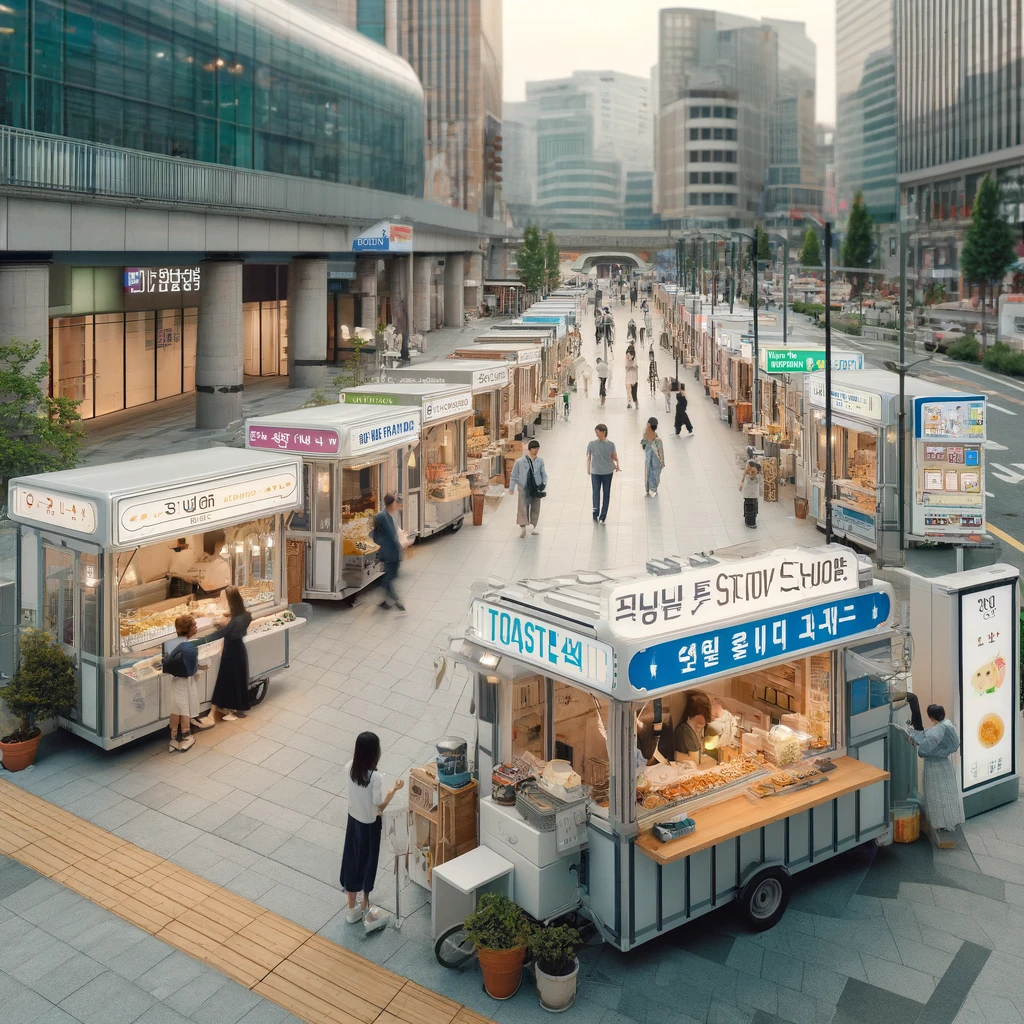The Longstanding Issue with Street Vendors at Gangbyeon Station
For decades, Gangbyeon Station, located near Seoul’s bustling Dongseoul Bus Terminal, was synonymous with vibrant street stalls, serving up local delicacies to night owls. However, these vendors often caused inconvenience to local residents by obstructing walkways and generating noise and litter. As Seoul grew, complaints about these informal markets escalated, particularly regarding their impact on pedestrian accessibility and the aesthetic quality of the neighborhood.
A Persistent, Peaceful Solution
In a notable shift from the usual forceful evictions that characterize street vendor removals, the Gangbyeon area witnessed a unique, conflict-free transition. Over several months, local government officials engaged in over fifty dialogue sessions with the vendors, discussing the implications of their presence and exploring mutual benefits of relocation. These discussions paved the way for a smooth transformation, emphasizing cooperation over confrontation.
Transition to Legalized Street Shops
Instead of eradicating street vending, the local authorities proposed a sustainable alternative. Vendors were offered spaces in authorized ‘street shops’ near Gangbyeon Station’s Exit 4. This move not only legalized their operations but also equipped them with modern facilities, minimizing the use of hazardous materials like LPG gas, and shifting to safer electric setups. This transition was supported by substantial financial aid for shop setup, ensuring vendors could continue their businesses without undue financial strain.
Economic Adjustments and Future Plans
While the new arrangement has brought structural benefits, some vendors express concerns over reduced earnings, citing restrictions on certain food items and the loss of their traditional customer base. The local government acknowledges these challenges and plans further adjustments to ensure these new ‘street shops’ thrive economically.
Reflections from the Community

The transformation at Gangbyeon Station serves as a testament to the power of patient negotiation and the potential for urban spaces to evolve without displacing those who depend on them for livelihood. As the area continues to develop, both residents and vendors are watching closely to see how these changes will shape their community and daily interactions.
Conclusion
This peaceful resolution and proactive approach by the Gwangjin District office highlight a progressive model for managing urban vendor challenges, providing a blueprint that other cities might follow to address similar issues in a humane and constructive manner.
South Korea’s Rising Stature in Global Patent Pre-examinations: A Hub for Technology Innovations
Hi, I’m [jeybee]. As a long-time resident of Seoul, I’m passionate about uncovering the authentic, everyday magic of Korea. This blog is my way of sharing my favorite spots, tips, and cultural insights with you, beyond the usual tourist traps.

